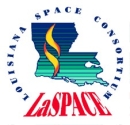



Payload 10 Information
Payload Flight Number:
Institution:
Payload Title:
Sheffield University Nova Balloon Lifted Telescope
Student Leader:
Faculty Advisor:
Payload class:
LARGE
Payload ID Number:
10
Mass:
Current:
Serial Downlink:
Analog Downlink:
Serial Commands:
Discrete Commands:
Payload Specification & Integration Plan
Due:
Delivered:
Payload Integration Certification
Scheduled:
Actual:
Flight Operation Plan
Due:
Delivered:
Final Flight / Science Report
Due:
Delivered:
Abstract:
Space weather has recently been classified by the UK’s Met Office as one of the highest priority natural hazards in the UK National Risk Register [1]. The USA’s National Oceanic and Atmospheric Administration (NOAA) also has an entire department dedicated to space weather prediction (SWPC). As the functioning of human society and scientific research has become more dependent on satellites in space, understanding and predicting space weather has become increasingly important. There are many ground-based and satellite-based experiments dedicated to observing the Sun in multiple wavelengths and modalities, such as NASA’s Solar Dynamics Observatory, however these are expensive to develop and maintain and therefore not accessible to most students and research institutions. SunbYte III is the third iteration of the Sheffield University Nova Balloon Lifted Telescope. The previous versions were flown on BEXUS 25 in 2017, and on HASP in 2018. The general aim of the SunbYte project is to develop a low cost telescope system capable of being lifted by a weather balloon out of the thick, distorting atmosphere of the troposphere to take high quality full disk images of the Sun. The successful flights of the previous iterations have proven the robustness of the structural, Sun tracking, and ACDS systems, therefore SunbYte III aims to build on this and take high resolution images of the Sun in two wavelengths - the Hydrogen-alpha line (656.28 nm) and the near ultraviolet (UV) Calcium II K (CaK) line (393.4 nm). The ability to study these lines simultaneously will provide scientifically valuable data on the layered chromosphere structure of the Sun, and the ability to link the processes visible in each.
Payload Integration Plan:
Monthly Briefings:
|